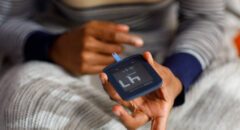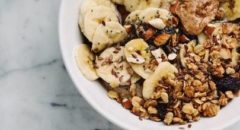
It took reading an article about a young Black man diagnosed with type 1 diabetes and
learning about a relative’s type 2 diagnosis to send Marrion Johnson Jr. to the doctor’s office curious about his own blood-sugar levels.
Twenty-eight and fit, it didn’t fully dawn on Johnson that he could be at risk for diabetes himself. In fact, he exercises regularly and has a muscular frame to show for it. Isn’t that enough to keep diabetes away?
Not quite. After the doctor ran some tests, Johnson was diagnosed with prediabetes – which often leads to developing type 2 diabetes.
“[The doctor] said my blood sugar was higher than normal. It wasn’t anything wild but it was
noteworthy,” Johnson said, recalling his January 2017 doctor’s visit. Johnson’s experience is common--1 in 3 American adults has prediabetes, but 90 percent of them don’t know they have it.
Though a little discouraged by the news at first because he does work out regularly as a way to
prevent health issues, the doctor reassured Johnson that his prediabetes diagnosis could
actually, be seen as a good thing.
“He made me feel like it was a good thing that I learned I have prediabetes because I have time to get my health on track,” Johnson added. “So I stopped eating so many sweets. Well, I’m eating sweets but in moderation. I stopped eating candy.”
A prediabetes diagnosis can allow time to switch up your diet and exercise habits to prevent type 2 diabetes. Type 2 is the most common form of diabetes. It can be hereditary, but it is also tied closely to whether an individual leads a healthy lifestyle. Type 2 disproportionately affects African Americans with 13.2 percent of those 20 years or older having it.
In taking control of his health, Johnson is working on making small changes, like cooking more
and adding vegetables to every meal.
“I don’t naturally eat vegetables but I’m trying,” Johnson said. “I’m trying to eat out less and consume more whole grains.”
This process has taught Johnson, though, that everything has some varying amount of sugar in it, including white bread and fruits. So finding alternative snacks that he enjoys has been difficult, too, but he’s up for the challenge if it means staying healthy.
“Me being diagnosed with prediabetes debunks the stereotype because I am in shape and exercise regularly,” Johnson said. “These things are not mutually exclusive. It’s not about what you look like. It’s about what you put inside your body, skinny or not.”
It only takes a minute to know if you’re at risk for prediabetes. Visit DoIHavePrediabetes.org to take a 1-minute risk test and know where you stand.








